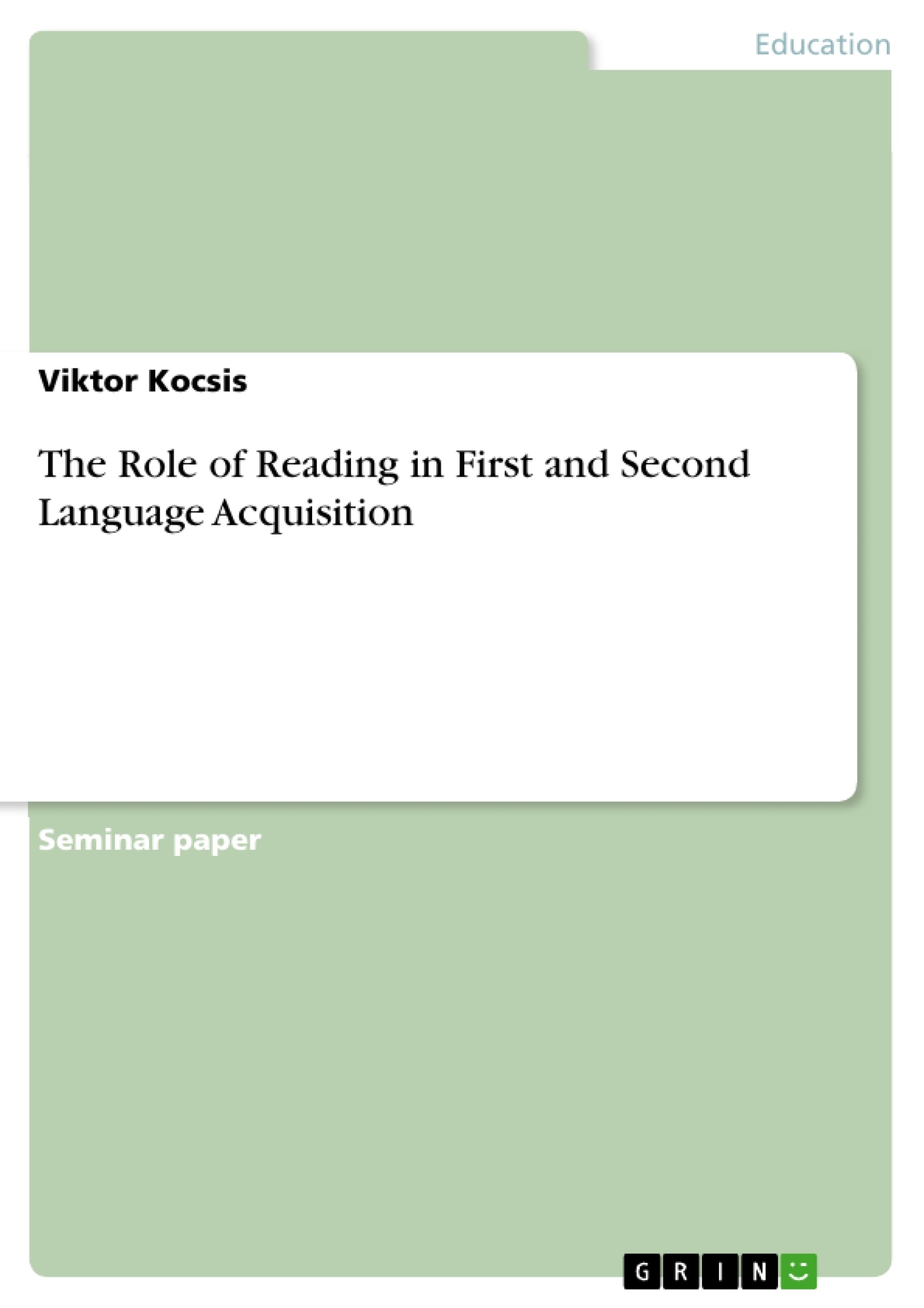“A person’s future opportunities for success and prosperity will be even more entwined with skilled reading abilities. It is therefore an important societal responsibility to offer every person the opportunity to become a skilled reader, and in many cases, this means becoming a skilled L2 reader.” (GRABE 2009: 6)
As GRABE reveals with his statement, reading has become an indispensable language skill not only in an individual’s mother tongue, but preferably also in its acquired foreign language, without which it is difficult, if not impossible to make career nowadays. Wherever we go outside our homes, we will see and read print, even so in more deprived areas, such as on hiking trails, where instead of advertising wallpapers we are likely to encounter signposts that guide us. Since information transfer is reserved to both oral and written communication in modern society, reading remains the only option to decode writing.
However, developing reading skills is more than just improving one’s word recognition and decoding abilities. GRABE points out that “most words build phonological activation prior to lexical access” (2009: 24) in the word recognition process that combines the interactive areas of orthography, phonology and meaning. This characteristic of reading allows for unconscious pronunciation drilling and training even though it can be assumed that readers will occasionally consciously check the pronunciation of certain unfamiliar words. Whether or not supported by conscious learning, reading seemingly prepares learners for oral communication by maintaining constant phonological activation.
Moreover, recognized words in the reading process are supposed to transmit some activation energy to their “semantic neighbours in the lexical network when they are accessed.” (GRABE 2009: 25/26) Known as the notion of spreading activation (GRABE 2009: 25), this phenomenon suggests that reading establishes a cognitive network of connotations that learners acquire to broaden their lexis for idiomatic application in communicative contexts.
As one may quickly realize, reading involves learning about both language and content, which is why it simply must be part of a regular English lesson. Therefore, the research question addressed in this paper is what English language teachers should keep in mind when developing reading tasks for both First (L1) and Second Language Learners (L2).
Inhaltsverzeichnis (Table of Contents)
- Introduction
- The Nature of Language and Literacy
- First Language Acquisition
- Characteristics of First Language Acquisition
- Models of L1 Development Stages
- Ideal Texts and Reading Tasks for L1 learners
- Second Language Acquisition
- Characteristics of Second Language Acquisition
- Reading Models for L2
- Ideal Texts and Reading Tasks for L2 learners
- Conclusion
Zielsetzung und Themenschwerpunkte (Objectives and Key Themes)
This paper explores the role of reading in both first (L1) and second language (L2) acquisition, examining its importance in developing language skills and knowledge. The primary objective is to identify key considerations for English language teachers when designing reading tasks for learners at different stages of language development. The key themes of the paper include:- The significance of reading for both L1 and L2 learners in modern society
- The nature of language and literacy and their distinct characteristics
- The influence of the Critical Period Hypothesis on language acquisition
- The importance of reading in facilitating language acquisition and development
- The development of effective reading tasks tailored to L1 and L2 learners
Zusammenfassung der Kapitel (Chapter Summaries)
Introduction
This chapter introduces the importance of reading in both L1 and L2 acquisition, highlighting the need for skilled reading abilities in today's world. It emphasizes that reading goes beyond word recognition and decoding, contributing to phonological activation and the development of a cognitive network of connotations, thus enriching learners' language skills and content knowledge.The Nature of Language and Literacy
This chapter explores the distinction between language and literacy, arguing that while language is instinctive, reading and writing are learned skills. It draws upon Halliday's language-based model of learning, which emphasizes the interconnectedness of learning about language, learning language, and learning content through language.First Language Acquisition
This chapter delves into the characteristics of first language acquisition, particularly focusing on the Critical Period Hypothesis. It examines the maturational growth of children and the idea that certain periods are more conducive to acquiring native-like proficiency in language. The chapter discusses research on the optimal periods for different aspects of language development, including phonology, syntax, and morphology.Second Language Acquisition
This chapter focuses on the characteristics of second language acquisition, outlining the key differences between L1 and L2 learners. It explores various reading models for L2 learners and delves into the development of ideal texts and reading tasks tailored to their specific needs and stages of language development.Schlüsselwörter (Keywords)
The paper focuses on the following key concepts: First Language Acquisition, Second Language Acquisition, Critical Period Hypothesis, Reading Comprehension, L1 and L2 Reading Tasks, Language Development, Literacy, Content and Language Integrated Learning (CLIL), and the role of reading in facilitating language acquisition.- Quote paper
- Viktor Kocsis (Author), 2012, The Role of Reading in First and Second Language Acquisition, Munich, GRIN Verlag, https://www.grin.com/document/230308



